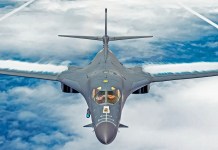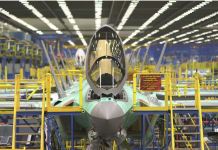Driven by the need to counter the perpetual threat posed by North Korea and the ambition to become Asia’s biggest defense exporter, South Korea has established itself as a major defense player, drawing customers from as far away as Europe and the Middle East for its cutting-edge, cost-effective weapons.
Swedish Shocker For Moscow! Its Media Claims Dozens Of Stolen Roadside Cameras Found On Russian UAVs
US Switchblade Drone ‘Knock Off’ Meraj-521 Unveiled By Iran; Comes After Grand Success Of Its UAVs In Ukraine
Over a previous record of $7.25 billion, South Korea’s defense export sales have already reached $15 billion this year. If anticipated agreements with Australia, Malaysia, Norway, and Saudi Arabia materialize, that figure may rise to $20 billion by year-end.
The significantly increasing number, as reported by the Korea Institute for Industrial Economics and Trade, is not a coincidence, according to analysts, but a result of calculated political planning.
The president of South Korea, Yoon Suk-yeol, recently announced his desire to see his nation rank among the top four exporters of weapons worldwide.
In a significant development worth examining, South Korea’s defense sales are riding on the back of a European country’s decision to shop military hardware as the war against Ukraine drags on, causing excessive military insecurity in the East European region.
At a ceremony in Seoul on October 19, Poland received the first shipment of its new South Korean-made tanks and howitzers while also signing a new arms contract with the regional industry.
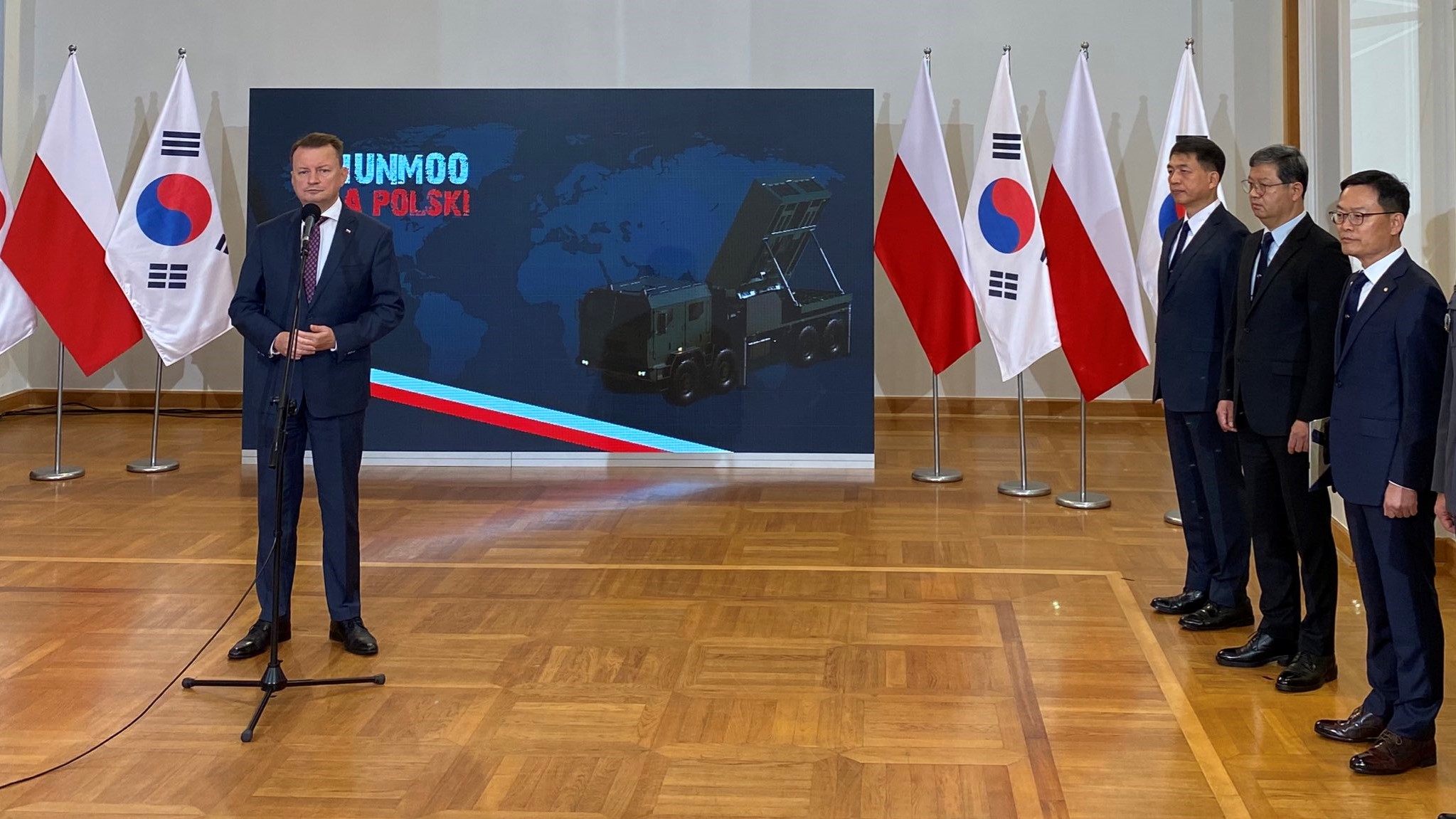
The delegation from the Polish government, led by Mariusz Baszczak, the country’s Deputy Prime Minister and Minister of National Defense, was earlier scheduled to arrive on October 17 to witness the delivery of the nation’s first K2 Black Panther tanks and K9A1 Thunder self-propelled howitzers as well as to sign a new contract for the K239 Chunmoo rocket artillery system.
The visit was later canceled due to a technical malfunction in the aircraft, according to a statement from Poland. However, news reports suggested that the Chinese authorities refused to permit a Polish aircraft to travel into Chinese airspace, believed to be in part due to Seoul’s closer relationship and military cooperation with NATO Countries.
Mariusz Błaszczak nie dotarł do Korei Południowej. Media: Chiny zablokowały przestrzeń powietrzną https://t.co/weFUNgR0Q7 pic.twitter.com/qOx5DSpszT
— Onet Wiadomości (@OnetWiadomosci) October 18, 2022
That said, Seoul is bagging major contracts, including a $5.8 billion agreement with Poland for Korea Aerospace Industries’ FA-50 fighter jets, Hyundai Rotem’s K2 Black Panther tanks, and Hanwha Defense’s K9 Thunder howitzers and K10 resupply trucks.
The East European country, a major NATO member and one that shares a border with the war-torn country of Europe, has undoubtedly emerged as the biggest customer of South Korean weapon systems in recent times.
Poland Is Driving Seoul’s Weapon Sales and How!
The spokesperson for the Polish Armaments Agency said in a statement that 10 K2s and 24 K9A1s would be sent to Poland, allowing crew training to begin in the European country.
The Hyundai Rotem K2 (Black Panther) is regarded as one of the best main battle tanks in the entire globe (MBT). It competes with the German Leopard 2A7 for the Leopard 2A4 MBTs that the Norwegian Army is replacing.

In addition, one of the most cutting-edge 155-millimeter howitzers, the K9 Thunder, has been exported to some of the world’s most powerful militaries, including Australia, Turkey, India, Egypt, Poland, Finland, Norway, and Estonia.
The Black Panthers delivered to Poland will have German gears and Korean engines. In contrast, the Thunders will have American gears, German engines, and some Polish parts, such as the integrated Topaz battle management system.
On August 26 of this year, the MND of Poland signed executive agreements to deliver K2 Black Panther tanks and K9A1 Thunder self-propelled howitzers. Poland will spend about PLN 16 billion ($3.26 billion) to purchase 180 K2 tanks of Korean design, ammunition, training, and logistics support, with deliveries expected to be finished by 2025.
Additionally, the estimated price of 212 K9A1 howitzers plus the ammunition, logistics, training, and support package will be PLN 11.4 billion ($2.32 billion), with delivery scheduled to begin in 2026.
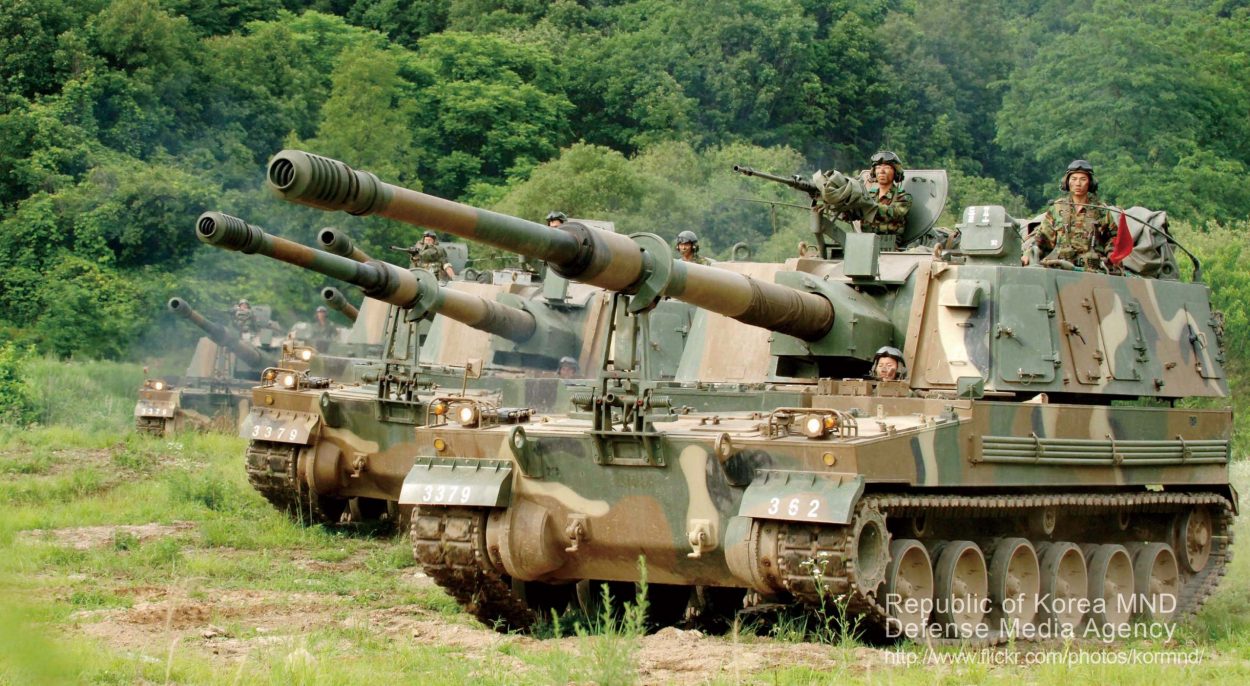
In addition, a framework agreement was signed between Poland and South Korea regarding the transfer of 288 K239 Chunmoo K-MLRS (Korean Multiple Launch Rocket System) systems to the Polish Land Forces. The decision to buy the Korean MLRS was made keeping in mind the inability of the US to supply the country with HIMARS that has been sent to Ukraine.
“In 2019, an agreement with the United States to acquire the HIMARS for the Polish Armed Forces was signed. The delivery of this equipment is scheduled for the next year. We submitted an inquiry for larger deliveries, but unfortunately, due to limited industrial capabilities, it will not be possible for the equipment to be delivered in a satisfactory timeframe. Therefore, we started talks with South Korea, our reliable partner, which resulted in the signing of a framework contract for the delivery of K239 Chunmoo today,” Poland’s Minister of National Defense Błaszczak stated during the ceremony.
Besides the rocket systems, tanks and howitzers, Poland is also buying fighter jets from South Korea to replace its aging fleet of MiG-29 combat jets. In July 2022, the Polish Air Force announced that it would replace Russian MiG-29 fighter jets with South Korean FA-50s.
At the time, the Polish Defense Ministry said later on Wednesday that South Korea will deliver 48 jets modernized for the needs of the Polish Air Force, with 12 fighters arriving by mid-2023, as previously noted by EurAsian Times.
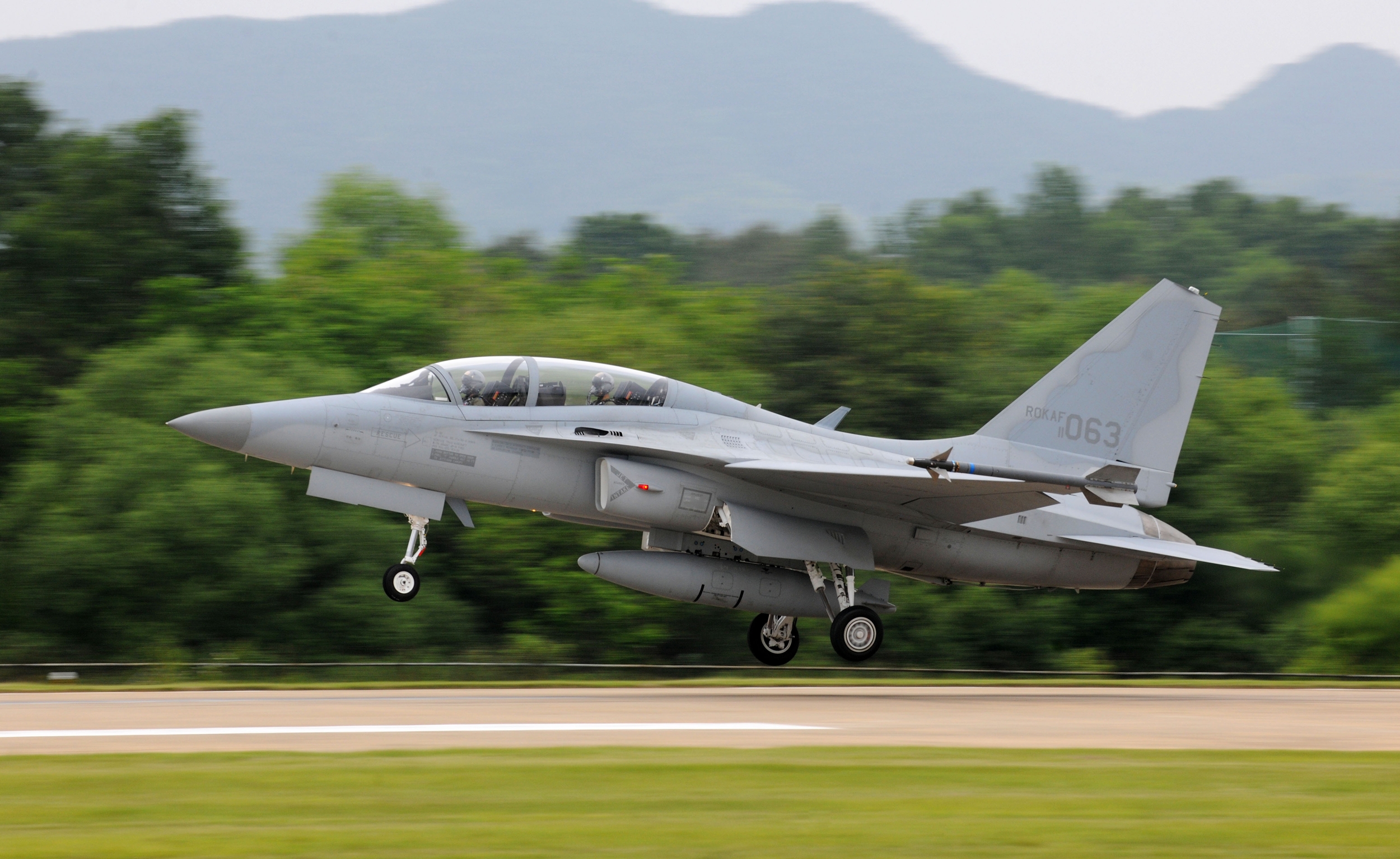
The delivery of military hardware to Poland should be viewed as “the exports of arms in the framework of bilateral relations between South Korea and Poland,” South Korean Foreign Minister Park Jin said during a briefing in July when asked about Seoul’s growing influence in the Ukraine conflict and global security.
However, it is pertinent to note that with western manufacturers busy catering to Ukraine’s military as the war refuses to end and the Russian defense industry reeling under international sanctions, it is a golden opportunity for Seoul’s defense manufacturers to fill the void and sign new deals.
By the end of 2022, defense exports from the nation are anticipated to increase almost three times from 2020 levels, reaching $10 billion. South Korea had a 2.7% proportion of global armament exports in 2016–20, 210% more than it did in 2011–15.
According to reports, South Korea’s defense industry’s capacity to create a range of military weapons tailored to the specific security difficulties faced by each potential buyer has fueled the country’s increase in defense exports.
South Korea agreed to sell the UAE Cheongung II midrange surface-to-air missiles during Moon’s visit to the Persian Gulf nation.. The deal was valued at an estimated 4 trillion won ($3.5 billion), according to a person familiar with the discussions.https://t.co/oRdeeMZW6e
— Harsh Gupta Madhusudan (@harshmadhusudan) January 17, 2022
Earlier, South Korea and the United Arab Emirates signed a contract in January to export the Cheongung II mid-range surface-to-air missile (M-SAM) system.
The agreement was the largest arms export agreement in the nation’s history and had a value of almost $3.5 billion. Even the K9 Thunder beat French, Russian, and Chinese pitches to win a $1.7 billion contract with Egypt in February.
In the wake of Russia’s invasion of Ukraine, South Korea’s defense sector is positioning itself as the ideal ally for nations in Eastern Europe outside of North America. And, with its big-ticket sales, Poland has become the symbol of Seoul’s entry into the far-fetched lands of Europe.
- Contact the author at sakshi.tiwari9555@gmail.com
- Follow EurAsian Times on Google News

